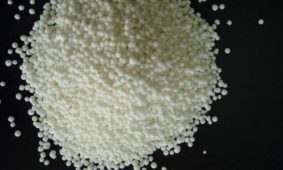Nutrients
Hydroponic Nutrients
Fertilizer vs. Hydroponic Nutrients In order to begin a discussion on hydroponic nutrients, it’s important to first distinguish the difference between the terms fertilizer and hydroponic nutrient. Fertilizer is intended to feed the microorganisms in the soil, such as beneficial bacteria and fungi. All of the living components in the soil must be protected, so […]
READ ARTICLEEC vs TDS
A quick answer to why we should use EC instead of TDS The debate over EC and TDS has been an ongoing issue for a long time. These two measurements are used to determine the strength of hydroponic solution. Although they are widely used they should only be used as a guideline and you should […]
READ ARTICLEHow Plants Uptake Nutrients
Nutrients play an important role in many plant processes. Nitrogen, for example, is a component of both amino acids (the building blocks of protein) and chlorophyll (the green pigment present in all plants). Phosphorous is essential to the formation of a plant’s DNA and RNA, and potassium is crucial to growth regulation and photosynthesis. Aside […]
READ ARTICLEpH Measurement
pH measurement is used in a wide variety of applications: agriculture, wastewater treatment, industrial processes, environmental monitoring, and in research and development. pH is a measure of the acidity or alkalinity of a solution. The pH value states the relative quantity of hydrogen ions (H+) contained in a solution. The greater the concentration of H+ […]
READ ARTICLETypes of Water in a Hydroponic System
There are many types of water to choose from when sourcing water for your hydroponic system. Some are better than others, and now is the time to determine the differences. The best situation is to have water with no added minerals, with an EC of close to zero milliSiemens, or μs, and a pH of […]
READ ARTICLECalcium in Plants
Calcium uptake and mobility Calcium uptake by the plant is passive and does not require energy input. Calcium mobility in the plant takes places mainly in the xylem, together with water. Therefore calcium uptake is directly related to the plant transpiration rate. Conditions of high humidity, cold and a low transpiration rates may result in […]
READ ARTICLECalcium Nitrate
Also called Norgessalpeter (Norwegian saltpeter) is the inorganic compound with the formula Ca(NO3)2. This colorless salt absorbs moisture from the air and is commonly found as a tetrahydrate. It is mainly used as a component in fertilizers. Nitrocalcite is the name for a mineral which is a hydrated calcium nitrate that forms as an efflorescence […]
READ ARTICLE














